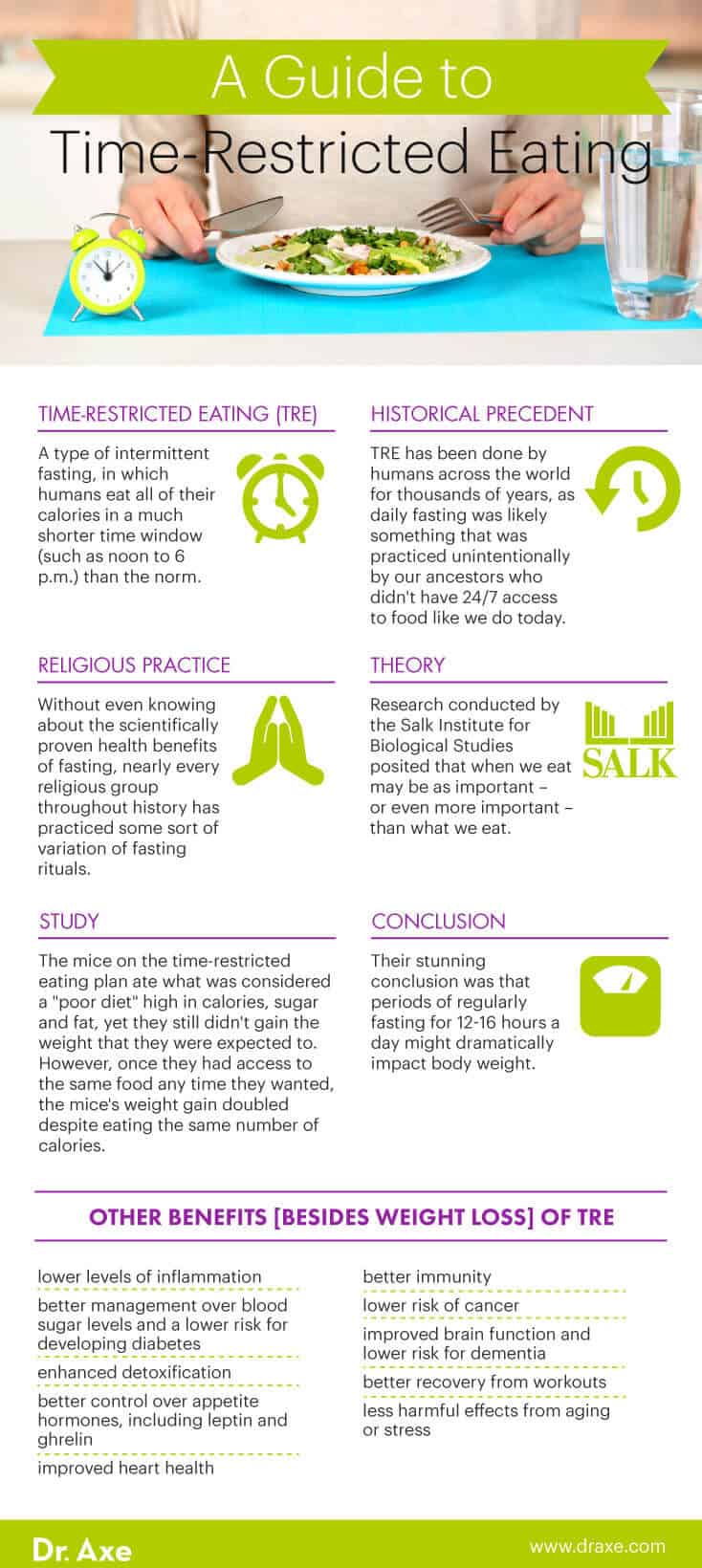This Dr. Axe content is medically reviewed or fact checked to ensure factually accurate information.
With strict editorial sourcing guidelines, we only link to academic research institutions, reputable media sites and, when research is available, medically peer-reviewed studies. Note that the numbers in parentheses (1, 2, etc.) are clickable links to these studies.
The information in our articles is NOT intended to replace a one-on-one relationship with a qualified health care professional and is not intended as medical advice.
This article is based on scientific evidence, written by experts and fact checked by our trained editorial staff. Note that the numbers in parentheses (1, 2, etc.) are clickable links to medically peer-reviewed studies.
Our team includes licensed nutritionists and dietitians, certified health education specialists, as well as certified strength and conditioning specialists, personal trainers and corrective exercise specialists. Our team aims to be not only thorough with its research, but also objective and unbiased.
The information in our articles is NOT intended to replace a one-on-one relationship with a qualified health care professional and is not intended as medical advice.
Time-Restricted Eating: Is It When, Not What, You Eat That Really Matters?
March 30, 2022

When you hear the word diet, you probably think of something that’s hard and confusing to follow, leaves you feeling deprived, and involves a list of foods to avoid, right?
Well, what if there’s another way to lose weight that’s dramatically different from most standard “diet” plans? And what if this alternative essentially eliminates the need for calorie-counting, sacrifice, deprivation and even willpower?
Enter “time-restricted eating,” a dietary tool that shows promise in protecting against obesity, type 2 diabetes and other common metabolic health problems.
What Is Time-Restricted Eating?
Time-restricted eating (TRE) is a form of intermittent fasting that involves eating only with a shortened window of time each day.
This approach focuses on aligning eating with one’s circadian rhythm, also called the “internal clock.” That’s because metabolic homeostasis is regulated by the circadian rhythm.
Misalignment between daily rhythms of food intake and circadian timing system can contribute to “circadian rhythm disruption.” This is associated with many metabolic problems because it interferes with the body’s ability to produce normal amounts of important hormones that control weight and appetite, such as ghrelin, insulin, leptin and others.
TRE may seem like a new trend, but it’s not. In one way or another, fasting has been done by humans across the world for thousands of years.
It was likely something that was practiced unintentionally by our ancestors who didn’t have 24/7 access to food like we do today. Without even knowing about the scientifically proven health benefits of fasting, nearly every religious group throughout history has practiced some sort of variation of fasting rituals.
Can you lose weight with time-restricted eating?
Weight loss is one of the main reasons why many people are drawn to TRE. A new meta-analysis published in the journal Nutrients in 2020 concluded that TRE “is a promising therapeutic strategy for controlling weight and improving metabolic dysfunctions in those who are overweight or obese.”
After reviewing 19 studies on TRE, researchers found it helped reduce body weight and fat mass while preserving fat-free mass.
The Salk Institute in California has been at the forefront of the time-restricted eating phenomenon, working to understand the impacts of fasting on different health markers, including body weight. According to researchers at the Salk Institute, when we eat may be as important — or even more important — than what we eat when it comes to maintaining a normal body mass index.
Researchers first stumbled upon the power of TRE when conducting studies in which mice were allowed to eat whatever they wanted but only during a set time of day. The mice on the TRE plan ate what was considered a “poor diet” high in calories, sugar and fat, yet they still didn’t gain the weight that they were expected to.
However, once they had access to the same food any time they wanted, the mice’s weight gain doubled despite eating the same number of calories. Here were some key findings:
- Nine-hour of access to food caused 26 percent weight gain in the mice
- 15-hour access to food caused 43 percent weight gain
- 24-hour access to food caused 65 percent weight gain
The stunning conclusion was that periods of regularly fasting for 12–16 hours a day might dramatically impact body weight.
Time-restricted feeding caused less weight gain than all-hour access for mice eating a high-fat, high-sugar diet over 12 to 26 weeks, and it also led to weight loss of up to 12 percent when applied to mice that were already obese.
What does this mean for the dieting industry? You might be able to eat whatever you want (within reason, since quality is still important) and still lose weight, simply by limiting the period of time in which you consume food.
This might even be true if you increase calories — especially calories from fat, because your body seems to burn these best during the remainder of the day, your “fasting” period.

How It Works
TRE is truly different from standard diet approaches, which usually fall into one of two categories: either calorie-restricted diets or food-restrictive diets.
TRE simply allows you to choose the foods that work best for you and eat them in any eight- or nine-hour window that you choose.
Fasting for roughly 15 or 16 hours a day — possibly even as little as 12 hours — while keeping the times that you eat to a shorter period appears to have significant effects on hormone levels that determine your metabolism, blood sugar, and whether or not you burn fat.
Recent eye-opening studies show that by only eating during a shortened eight- to nine-hour window each day, your body is more likely to burn fat and keep your weight at a healthy level. This even seems to be the case without the need to cut calories, avoid entire food groups or count macronutrients like carbs and fat. How is this possible?
It appears that our bodily functions operate best when they act something like clockwork — preferring to schedule our repair, maintenance and “system backup” during planned downtimes. This means that when the body follows a predictable schedule of eating and fasting, the hormones might respond by producing fat burn and weight loss — potentially even rapidly.
Maybe you’re convinced that TRE can work for weight loss, but you wonder if fasting is healthy.
Related: The Warrior Diet: Reviews, Meal Plan, Pros & Cons
Benefits
Is time-restricted eating healthy? Yes, as explained by a 2020 study published in iScience, which states, “TRE reduces body weight, improves glucose tolerance, protects from hepatosteatosis, increases metabolic flexibility, reduces atherogenic lipids and blood pressure, and improves gut function and cardiometabolic health.”
Aside from preventing obesity, other benefits of fasting and practicing time-restricted eating might include:
- lower levels of inflammation
- reduced risk for metabolic syndrome
- better management over blood sugar levels and a lower risk for developing type 2 diabetes
- enhanced detoxification
- better control over appetite hormones, including leptin and ghrelin
- improved heart health and lipid profiles (including lowered cholesterol), plus protection against cardiovascular disease
- better immunity
- lower risk of cancer
- improved brain function and lower risk for dementia
- better muscle recovery from workouts
- less harmful effects from aging or stress
TRE seems to function like a natural medicine for the heart, digestive and immune systems, and more. One of its biggest benefits is improving insulin sensitivity and preventing metabolic syndrome. It also has natural anti-inflammatory effects.
A 2020 meta-analysis found that TRE achieved a superior effect in promoting weight loss and reducing fasting glucose compared to approaches with unrestricted time in meal consumption. The analysis included studies that involved having participants fast between 12 and 20 hours daily for four to eight weeks.
Poor blood sugar control is a big issue because it’s a risk factor for type 2 diabetes, obesity, heart issues and even some types of cancer, among other conditions. For example, when someone is overly sensitive to insulin, which is the “fat-storage hormone” that signals cells to take in calories from food, more insulin is produced by the pancreas, and this promotes the growth of cells, even mutated cancer cells.
Results from a 2021 randomized, controlled trial suggest that long-term TRE combined with a resistance training program is feasible, safe and effective in reducing inflammatory markers and risk factors related to cardiovascular and metabolic diseases.
How to Do It
What is the best time-restricted eating schedule?
More research is still needed to determine the ideal meal schedule, including the ideal period of fasting each day/week. For example, we still aren’t totally sure if it matters when someone starts his/her fast each day or how many days a week of TRE are best.
As of now, the recommendation is to go between 12–16 hours without eating several times per week. Depending on your current eating schedule, this may only be a small change or a big one.
Although fasting for about 16 hours is standard, some people see even better results from further restricting their eating windows to only five to six hours daily, meaning they fast for 18+ hours.
How often should you do it?
Luckily, it appears that you don’t need to follow TRE every day to see results. Eating within an eight- or nine-hour window most days of the week — about four to five — seems to still do the trick. In fact, Dave Zinczenko, author of the top-selling book “The 8-Hour Diet,” recommends following time-restricted eating only three or four days a week.
Do you always need to skip breakfast?
For many people, going against the norm and skipping breakfast seems to be the easiest way to practice time-restricted eating. Although for decades we’ve been told that breakfast is “the most important meal of the day” and that we’re doomed to gain weight without it, this doesn’t seem to necessarily be true for everybody.
While TRE really relies on eating within a shortened window and doesn’t mean you need to skip breakfast necessarily, it might be the most manageable way to follow a fasting program.
What should you eat within your eating window?
Of course, when you are eating, what you choose to eat is still important for overall health. You don’t need to count calories, but aim to make the vast majority of your diet whole foods, including quality protein foods, healthy fats and plenty of different vegetables.
If you take any medicine daily (or many supplements), keep in mind it’s usually best to take with a meal within your eating window.
What can you drink during time-restricted eating?
Within your eating window, enjoy healthy beverages like water, coffee, tea, coconut water, bone broth and fresh pressed juices. When fasting, stick to only water, coffee and herbal tea.
Should you exercise while fasting?
You can, and still should, exercise while doing TRE, but you want to time your workouts according to when you have the most “fuel” and energy. Try timing your workouts so you eat shortly after exercising (a combination of carbs and protein) — this way you provide your body with the energy it needs to recover.
Exercising is important no matter what type of diet you follow because it helps retain lean muscle mass and also keeps you more sensitive to insulin, which is beneficial for overall metabolic health. Be sure to continue to do strength training to hold on to muscle, as well as some cardio.
Related: 5:2 Diet: Guide to How It Works, Meal Plan, Benefits & More
Risks and Side Effects
TRE might not be for everyone, and some people appear to do better with practicing various types of fasting in general than others. Fasting has an impact on blood sugar, so anyone dealing with low blood sugar (hypoglycemia) should steer clear of fasting until glucose and insulin levels are well-managed.
Fasting can also impact hormones, including cortisol and adrenaline. Women might be more impacted by these effects than men, although that isn’t necessarily a bad thing.
Fasting isn’t meant to become a source of stress, but in some people with compromised or high cortisol and adrenaline levels, a further increase in these hormones from fasting can result in some unwanted side effects.
If you have existing adrenal or hormonal issues, or you’re healthy and try TRE but notice you’re experiencing fatigue, anxiety and irregular periods due to the hormone disruption, then TRE might not be for you — it might be better to eat more often throughout the course of the day.
Conclusion
- Time-restricted eating is a form of intermittent fasting that involves eating only with a shortened window of time each day, usually about eight to 10 hours.
- Can you lose weight by only eating eight hours a day? Yes, many people do. That’s because TRE helps promote metabolic health and regulates hormones important for body weight and hunger.
- TRE has been shown to have benefits for overall health, including by protecting against not only obesity, but metabolic syndrome, type 2 diabetes, heart disease, high blood pressure and cholesterol, and other problems.
- Start by fasting for about 12+ hours daily, and then increase to 16 hours of fasting if possible for the best results.











